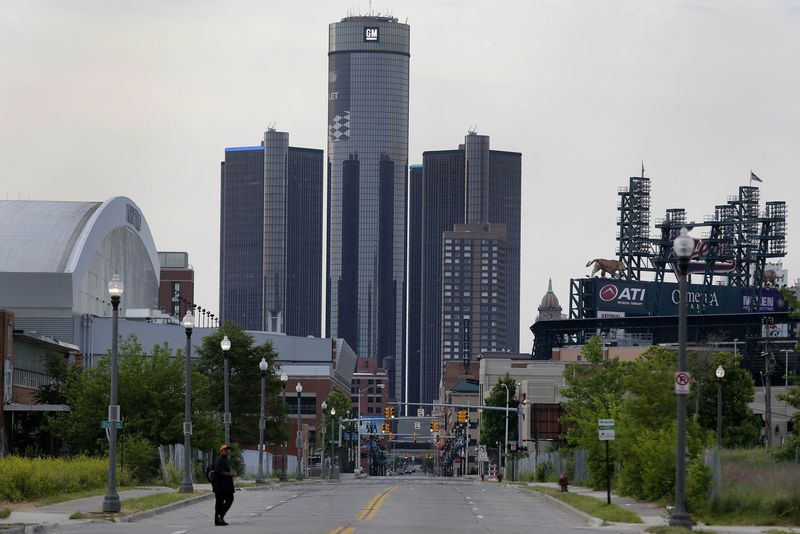© Reuters. FILE PHOTO: The new GM logo is seen on the facade of the General Motors headquarters in Detroit, Michigan, U.S., March 16, 2021. Picture taken March 16, 2021. REUTERS/Rebecca Cook/File Photo
By Joseph White and David Shepardson
(Reuters) -About 5,000 General Motors Co (NYSE:) salaried workers took buyouts to leave the company, putting the company well on the way to hitting a $2 billion cost-cutting target, the automaker’s chief financial officer said Tuesday.
GM shares were trading down 2.1% in afternoon trading, even though CFO Paul Jacobson said demand for GM’s trucks and SUVs remains strong in the United States.
GM has been able to raise prices in the United States over the past two years as supply chain bottlenecks kept production in check. Going forward, Jacobson said the opportunity to boost prices much further “isn’t there. We have to be more urgent around cost-cutting.”
GM set a goal of cutting $2 billion from operating costs by the end of 2024, with 30%-50% of the total being achieved this year. The response to a buyout program means GM will be at the higher end of that 2023 goal, Jacobson said during a Bank of America (NYSE:) conference.
GM CEO Mary Barra said in a memo to employees on Tuesday seen by Reuters that February job cuts of a few hundred jobs and 5,000 buyouts “have provided approximately $1 billion towards” the $2 billion target. She added “a company-wide involuntary separation program is not a consideration at this point.”
GM will cut production to keep inventories in check, Jacobson said. The automaker earlier this year shut down a pickup truck assembly factory in Fort Wayne, Indiana, for two weeks.
GM will take a $1 billion charge in the first quarter, he said. The company had previously projected $1.5 billion in charges related to staff reductions.
Jacobson said GM is now allocating 75% of its annual capital spending toward electric vehicle projects, which in the short term will be less profitable than the automaker’s combustion vehicles.
GM is in a good position to benefit from U.S. electric vehicle subsidies under the Inflation Reduction Act because of its investments in North American battery, raw materials and EV assembly, Jacobson said.
GM has three battery factories in North America, and will announce the location of a fourth domestic battery plant soon, he said.
GM will further cut costs through reducing vehicle complexity, expanding use of shared subsystems between gas-powered and electric vehicles, focusing investment in growth initiatives with near-term benefits and decreasing “spend levels across all parts of the company, including travel and marketing,” Barra said.
Some analysts have questioned GM’s continued investments in its Cruise robo-taxi business. Jacobson said Cruise is expanding and “executing really well.”
Read the full article here










